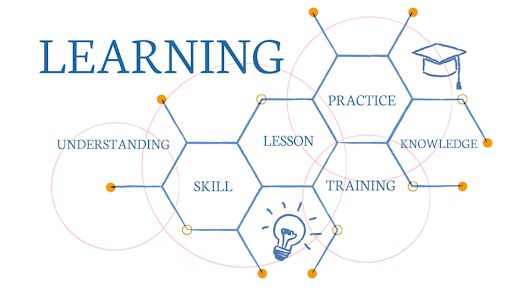A recent McKinsey study clarifies that addressing skill gaps needs to be among the top priorities for businesses, regardless of their size, to thrive.
As of 2023, 69 percent of organizations have invested in more skill building now, than they did before the COVID-19 pandemic.
The benefits that you can enjoy from learning and development initiatives are plenty. It not only helps the growth and development of employees but also contributes to the overall success of the business.
Investing in a sound L&D program can be transformative as it lets the employees gain the necessary skills, makes organizations competitive, and develops a continuous learning environment in the workplace.
Development is an important component of any business. Companies can never grow without change and progress. The same thing applies to your employees. Without relevant learning and development activities, they are not set up for success and this can hinder their professional growth.
L&D plays an important role in assisting your team to adapt, innovate, and deliver their best. This training will not only fulfill your training obligations but will also lead your company to success.
What is Learning and Development (L&D)?

Learning and development, also referred to as L&D, is the process of empowering employees to acquire new skills and knowledge. It usually involves identifying learning needs, designing targeted training programs, and evaluating the effectiveness of the learning initiatives.
L&D is responsible for any activities that would facilitate learning and change the behavior, attitudes, skills, knowledge, and understanding. This can happen on many different levels from the entire organization down to a single department, a team or even an individual.
The goal of learning and development (L&D) is to enable individuals to develop their talents, enhance their knowledge, and improve performance so they can contribute to the overall success of the organization.
Based on LinkedIn Learning’s 2023 Workplace Learning Report, 89% of L&D pros agree that proactively building employee skills for today and tomorrow will help navigate the evolving future of work.
Learning can refer to a variety of activities, including training, coaching, mentoring, personal development, performance management, talent acquisition, and more. The purpose of L&D is to inform about the main roles and responsibilities and ensure that the organization and individuals both are learning.
“The single biggest driver of business impact is the strength of an organization’s learning culture” – Josh Bersin
Different Types of L&D Training
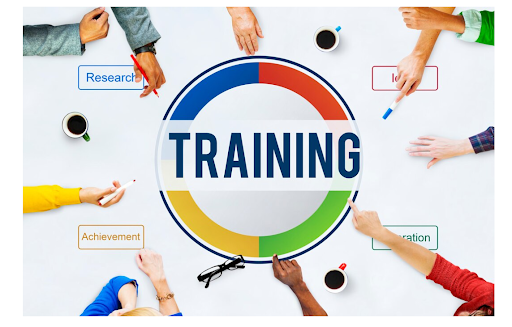
There are multiple types of Learning and Development (L&D) Training offered. We’ve chosen some of the most popular ones for you to consider:
Onboarding and Orientation Programs:

This program is specifically designed to introduce new employees to the organization’s culture, its policies, regulations, processes, and the individual’s job responsibilities, among other things.
Onboarding programs often involve orientation sessions, introductions to important stakeholders, training on business policies and procedures, job-specific training, and access to relevant tools and resources.
Hard Skills Training:

This type of training focuses on teaching employees the technical skills that are needed to perform their job tasks effectively such as programming languages, machine operating, data analysis techniques, and specialized industry-specific skills.
Hard skills training is usually delivered in a classroom setting or through online courses to provide structured learning and hands-on practice.
Soft Skills Development:
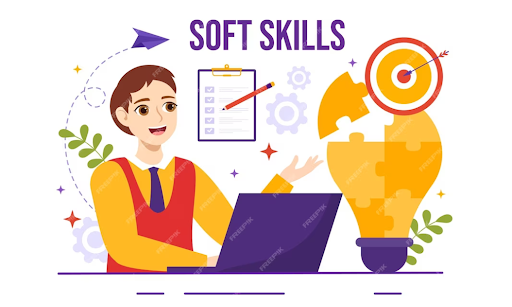
Soft skills are non-technical and interpersonal skills that help employees to interact effectively with others in the workplace.
Soft skills training often includes communication, teamwork, and problem-solving skills typically delivered in a variety of formats, including workshops, coaching, and mentoring.
Leadership Development Programs:

Leadership development programs are structured initiatives designed to enhance the leadership skills, capabilities, and qualities needed for successful leadership.
These programs cover various topics, including leadership styles, emotional intelligence, conflict resolution, decision-making, and strategic thinking.
Management Training:

Management training programs are intended to meet the needs of individuals in managerial roles or those aspiring to move into such roles.
This program covers performance management, employee engagement, delegation, team building, collaboration, change management, and other managerial skills.
Sales and Customer Service Training:

Sales and customer service training programs are designed to fine-tune specific skill sets that are crucial for sales professionals and customer service representatives.
The training might cover topics such as customer relationship management, sales techniques, negotiation skills, and handling customer inquiries and complaints.
Cross-Training Initiatives:

Cross-training is a training program where employees get the opportunity to learn and develop skills in other roles outside of their primary work.
Through this training, employees can gain a broader understanding of the business, enhance their versatility, and easily fill in for peers when needed.
Mentorship and Coaching Programs:

The mentorship program involves pairing a more experienced employee with someone less experienced to provide guidance and support, to help them develop personally and professionally.
On the other hand, Coaching focuses on short-term, goal-oriented interactions aimed at improving specific skills or tackling particular challenges.
Different Formats of L&D Programs

Learning and Development (L&D) programs can be delivered in a variety of formats to match different learning styles, preferences, and goals. Here are some common formats of learning and development programs:
On-the-job Training:

On-the-job training involves learning new skills and gaining nuanced knowledge while performing actual job tasks within the work environment. In this program, employees learn essential skills, tasks, and responsibilities associated with their job roles.
This training usually takes place with the support of experienced employees or leaders and focuses on practical, hands-on experience rather than formal classroom instruction.
Blended learning:

Blended learning is a teaching method that combines traditional in-person instruction and online learning that give learners more freedom to learn.
This program includes a wide range of learning techniques, such as classroom lectures, group discussions, hands-on exercises, and digital resources, to give a complete learning experience.
E-learning and Online Training:
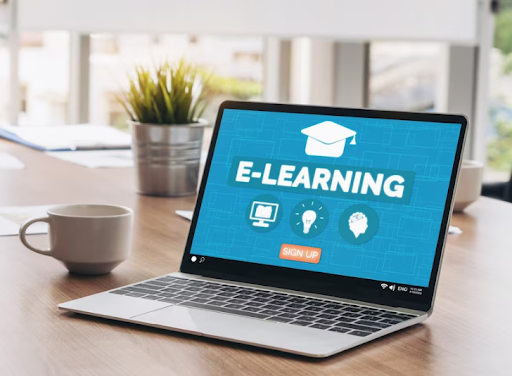
E-learning and online training programs use digital platforms to provide training materials remotely. These programs offer flexibility, scalability, and accessibility, allowing employees to study at their own pace and convenience.
The learners typically access e-learning courses through a learning management system (LMS) or a dedicated online training platform.
Instructor-led training (ILT):

Instructor-led training (ILT) is a traditional form of training where an instructor leads a group of learners, typically conducted in a classroom setting. This type of training involves face-to-face interaction between the instructor and participants, allowing for real-time feedback, discussion, and collaboration.
This format is ideal for learners due to its personalized instruction, immediate clarification of concepts, and social interaction among participants, making it a popular choice for interactive and immersive learning experiences.
Microlearning:
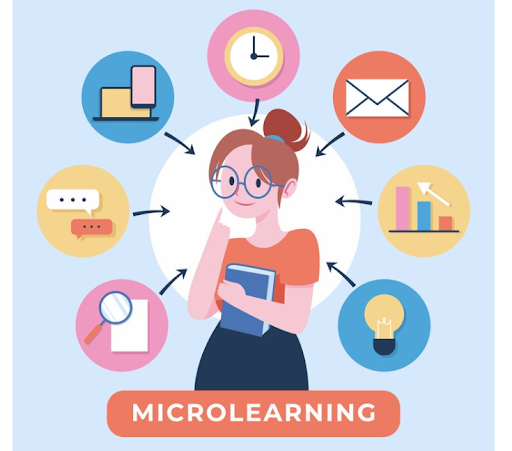
Microlearning is a learning approach that delivers short, focused, and highly targeted learning content to learners in small and easily digestible sections. Their lessons cover specific topics which help learners quickly learn the specific skill at their own pace.
Microlearning initiatives often include videos, pictures, or quizzes to keep learners engaged and remember what they have learned. This type of learning program is perfect for busy workers who prefer learning in bite-sized chunks
The Key Benefits of Learning and Development (L&D)

Continuous learning and development (L&D) programs offer numerous benefits for both individuals and organizations.
The following are some of the core benefits of continuous learning and development initiatives:
Benefits for Employees
- Upgraded Skills and Knowledge: The L&D program contributes significantly to elevating employees’ skill levels and professional knowledge by providing targeted training tailored to their roles and career goals. Through a variety of training methods, employees can gain fresh skills, improve their communication abilities, and enhance their leadership capabilities.
The program additionally encourages knowledge-sharing among peers, allowing employees to learn from each other’s experiences and expertise. As a result, employees become more proficient in their job responsibilities, adapt to new technologies and industry trends, and are better equipped to tackle any challenge that may come their way. - Increased Job Satisfaction: Based on facts, 58% of employees believe professional growth improves their job happiness. L&D programs enhance job satisfaction by offering employees opportunities to grow in position, develop necessary skills, and advance in their careers.
Employees enjoy it when they are encouraged to try new things such as taking on challenging projects, exploring innovative ideas, and experimenting with different approaches to complete their tasks. L&D initiatives empower them to accomplish this.
Employee morale and job satisfaction increase further when they are appreciated and rewarded for their hard work. - Improved Employee Performance: According to a study, 59% of employees believe that more training improves their job performance.
L&D programs usually focus on the practical implementation of skills and knowledge, empowering the employee to perform their work more effectively and confidently. It helps them stay up to date on the latest techniques and trends that are necessary for them to smoothly carry out their duties.
Overall, investing in L&D programs allows organizations to develop a high-performing workforce that strives for excellence and success. - Enhanced Employee Engagement: Employee engagement is one of the most rewarding investments any company can make as it allows for the workforce to be motivated, productive, and loyal to the company.
A vast majority of employees, around 92%, have expressed that well-planned employee training programs have a positive impact on their engagement.
When employees feel supported in their professional development and have access to relevant training and learning opportunities, they become more invested and committed to their work.
L&D programs enhance employee engagement by providing opportunities for skill development, career advancement, and personal growth. Teaching employees new skills and helping them improve in their roles is a testament to the fact that the company values their efforts and dedication.
Benefits for Companies:
- Talent Attraction and Retention: L&D programs are a must for businesses to recruit and retain talented candidates. Employees typically prefer companies that offer learning and development opportunities for personal and professional growth.
This approach helps companies attract world-class candidates who are looking for opportunities to continuously learn and improve their skills professionally.
Additionally, L&D programs contribute to talent retention by providing employees with opportunities to grow and advance within the organization.
When employees feel they are being given guidance to grow professionally, they are more likely to stay with a company longer. Research says that over 45% of employees are more likely to remain with a company that is invested in their learning and development. - Increased Productivity: L&D programs increase productivity by equipping employees with the skills and knowledge required to perform their jobs more effectively. When a company invests in talent development, employees get more proficient at their roles and are more prolific in general.
Employee productivity plays a huge role in the overall success of the company. L&D initiatives pave the path for employees to complete their tasks quickly and efficiently, by making sure that they are well-equipped to efficiently tackle any hurdle they may face. Adequate and high-quality training also instills confidence in employees, which makes them deliver their best. - Strengthens Company Culture: A robust Learning and Development (L&D) program strengthens company culture. By investing in employee development through a robust L&D strategy, companies demonstrate that they are dedicated to supporting the personal and professional growth of their workforce.
L&D creates a culture that values learning, collaboration, and innovation, where employees feel empowered to pursue new skills and expertise. These initiatives promote transparency and open communication, which lets teams share their knowledge across teams, and does away with organizational silos.
As employees take part in learning activities, they become more invested in the company’s mission and goals, leading to higher levels of engagement and work satisfaction. - Increased Innovation and Creativity: Successful Companies often show a strong appetite for innovation. It helps businesses grow, stay competitive, and adapt to changes that most others fail to.
L&D programs foster innovation and creativity by empowering employees to think critically, explore new ideas, and develop inventive solutions to unexpected challenges. They also allow employees to research and analyze to make smart decisions and solve business challenges. Ultimately, innovation and creativity enable employees, as well as companies, to unleash their full potential.
Challenges Companies Can Face Without L&D Program
The Cost of Ignoring L&D Programs: Challenges to Expect

Based on training information collected from more than 2500 firms, The American Society for Training and Development (ASTD) found that:
- Companies that provide comprehensive training have 218 percent higher income per employee than those with less comprehensive training
- They enjoy a 24% higher profit margin than those who spend less on training
- They generate a 6% higher shareholder return if the training expenditure per employee increases by $680 (Source)
The business implications of not investing in L&D can be costly. While several companies have taken to investing in L&D more actively over the last couple of years, there is still reluctance in many others. Not investing in a dedicated L&D team or programs can present several challenges.
Let’s have a closer look at some of these challenges.
Deficiencies in Skills:
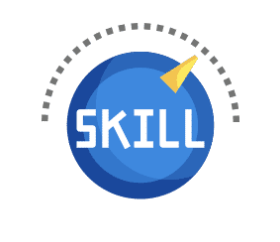
Without robust Learning and Development (L&D) programs, employees may lack the necessary skills and knowledge to effectively perform their work responsibilities. As a result, task completion takes longer and overall productivity might go down.
In addition, employees won’t be able to keep up with industry trends, technological advancements, or changes in their roles. Over time, this may turn into a major challenge for you.
Low Performance:

Employees won’t be able to perform well if they don’t get regular training and upskilling. Their skill set can become outdated, which can compromise the speed, quality, and quantity of work,
Without adequate training, employees cannot become proficient at their jobs.
High Employee Turnover Rates:

Without opportunities for professional growth and skill development, employees experience constant obstacles in their day-to-day work, leading to frustration and dissatisfaction, prompting them to seek career development opportunities elsewhere.
As employees leave the company in search of better prospects, turnover rates increase, resulting in disruption of workflows and increased recruitment costs.
Overall, insufficient L&D programs can lead to employee turnover, which hinders the growth and stability of the company.
Innovation Gap:

The L&D program plays an important role in empowering people to try innovative approaches as it provides the skills and knowledge needed to explore new ideas effectively. But if you do not invest in L&D, your workforce may lack innovation.
Employees can miss out on industry best practices, which could hinder their ability to effectively address work-related challenges. Therefore, it is critical to have L&D in the organization if you want to remain competitive in today’s market.
Engagement Issues:

Not having access to L&D initiatives will make it difficult for you to engage your employees. First, they won’t be able to learn any new skills so their professional growth is compromised. Their skills and knowledge \become outdated, which gives rise to disengagement and dissatisfaction.
Without proper training, employees will not be able to progress in their careers, which will lead to a lack of promotion opportunities. All these things jeopardize healthy employee engagement and will cost the company dearly, eventually.
Limited Talented Employees:

L&D programs play an important role in helping you identify, build, and retain great talent within the company. Think of L&D initiatives as a process that constantly nurtures existing employees with the required skill sets to get better, faster, and more prolific at their tasks in the short term.
While, at the same time helping you to develop and train promising candidates to take on managerial and leadership roles, in the long-term.
Failing to train and upskill employees will force you to spend a bomb on hiring external candidates for every role that opens up.
Ineffective Leadership:
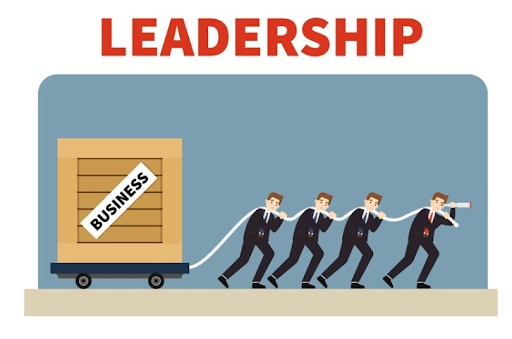
Leadership development is crucial for making a business successful in the long run. Any organization needs great leaders to inspire the workforce.
But, if there are no programs to help existing employees become leaders in the future, it puts the company at risk of bringing in an external leader who might not be aligned with the vision of the company. This can result in ineffective leadership and a lack of direction.
Inefficient Onboarding Procedure:

A successful onboarding is important for integrating new hires into the company culture and preparing them for their roles. However, a shortage of structured learning and development programs can lead to inefficiency and confusion.
New employees may struggle to understand business policies and processes without comprehensive documentation and resources. Plus, they won’t get the proper guidance and support they need to acclimate to their roles.
Thus, the onboarding process will probably be messy and unproductive without an L&D program, hindering the smooth integration of new employees into the organization.
Best Practices for Implementing L&D Programs in a Company

Implementing Learning and Development (L&D) programs will have a transformative effect on your company by empowering employees to acquire new skills, adapt to change, and drive innovation.
Here are some best practices to consider:
- Align with Business Goals: First, understand the primary goal of the organization like mission, vision, and key priorities. Then, align the learning and development programs with these goals to make sure that the training programs help the company reach its goals.
For example, if your company’s goal is to increase customer satisfaction, L&D programs will focus on enhancing customer service skills among employees. Similarly, If your organization’s goal is to increase sales revenue, L&D programs will focus on improving the sales skills and negotiation techniques of the team.
- Understand Skill Gaps: After aligning the L&D with business goals, focus on finding the skills that are most important for the company’s success. Conduct a complete assessment to figure out what knowledge, skills, and talents are needed for people to succeed in their roles. You can measure employee skill levels through surveys, tests, interviews, and performance reviews.
- Involve Stakeholders: Further, involve key stakeholders in the planning and implementation of L&D programs such as senior leaders, HR professionals, department heads, managers, and experienced employees.
Stakeholder involvement is important to ensure that the program effectively meets actual needs and is in line with the organization’s goal. They can identify areas that need improvement, address performance concerns, and stay up-to-date with the latest trends that L&D should focus on.
- Promote Continuous Learning: Develop a supportive environment where employees feel empowered to experiment with new things, take risks, and learn from failures.
Show employees the value of continuous learning. Encourage employees to take charge of their learning journey, set personal development goals, and seek out opportunities for growth and advancement.
Recognize and reward individuals who are dedicated to continuous learning. You can also share success stories to inspire your employees.
- Leverage Technology: Use technology for the L&D program such as learning management systems (LMS), e-learning platforms, virtual classrooms, video conferencing tools, content authoring software, and mobile learning applications.
Leveraging technology in learning and development programs increases flexibility, scalability, and personalization.
Employees will have easy access to training materials, anytime and from any location. In addition, technology can help you keep track of your employees’ learning progress.
- Provide Support and Resources: To make learning easier, provide enough support and resources to employees. Ensure that learners have easy access to learning materials, including course materials, textbooks, online resources, and multimedia content.
Also, allow them to use a centralized platform or learning management system (LMS) where learners can access all relevant materials. Connect learners with subject matter experts who can provide additional support, answer questions, and give practical advice related to the content of the L&D program
- Set a Clear Budget: Creating a clear budget for a learning and development (L&D) program requires careful evaluation. Estimate the costs for each component of the L&D program, such as curriculum development, training materials, technology platforms, venue rental, travel expenses, etc.
Allocate the budget based on the priorities identified during the skill gap assessment. Lastly, make sure the planned budget fits with the organization’s financial goals and priorities, then get the approval from the concerned stakeholders.
- Measure and Evaluate: After successful completion of the L&D program, assess it properly to understand its outcomes. Analyze important metrics like training completion rates, learner satisfaction levels, knowledge retention, skill development, behavior change, and return on investment (ROI).
Eventually, take feedback from employees to know more about the overall impact of the L&D session. Create a report with all relevant findings and share it with stakeholders. This will help you with future learning and development activities.
By following these best practices, organizations can effectively implement L&D programs that align with their business goals and incorporate modern learning strategies to maximize employee development and performance.
What is the 70-20-10 Learning and Development Model?
The 70-20-10 is a framework that is an incredibly popular theoretical model developed for learning and development (L&D).
It shows us how we can absorb certain knowledge and skills appropriately.
70% of learning occurs through experience
20% learning through social interaction,
and 10% through formal education and training.
Many organizations use this model to create a high-performance learning culture within their company. According to training industry research, US companies alone spent $101.8 billion on training in 2023.
This model was developed in the 1980s by three researchers and authors working at the Center for Creative Leadership, a non-profit educational institution in Greensboro, North Carolina, named “Morgan McCall”, “Michael M. Lombardo”, and “Robert A”.
The 70-20-10 learning model actually explains the most effective ways for employees to learn and acquire the skills needed in the workplace. And they are implemented by organizations around the world to enhance their learning and development activities. The framework is divided into three different categories. Let’s explore a bit more.
70% Experiential Learning (Learning on the Job)
This is the most significant source of learning with you gain through on-the-job experiences, taking on new challenges, working on projects, and pushing yourself outside of your comfort zone. It not only teaches you from experience but also uses that knowledge in the future. This learning method allows employees to gain hands-on knowledge, learn from mistakes, and improve their performance significantly under the supervision of managers and senior leaders.
20% Social Learning (Learning from Others)
20% of learning is achieved through social interaction such as mentoring, networking, interacting with colleagues, collaborating with peers, collecting feedback, and learning from the experiences of others. When you learn from others, you get an entirely new viewpoint and a different way of thinking. It can really help you identify blind spots and gain insights that you may have never seen. By engaging with others, you develop a deeper understanding of your strengths and weaknesses so that you can work on improving yourself.
10% Formal Learning (Classroom or Structured Training)
Finally, 10% of learning is gained from formal education, such as courses, workshops, seminars, online classes, or certifications. Formal learning is a small part of an overall learning journey but it is still important to consider. In fact, formal learning includes structured training programs that provide theoretical knowledge or practical skills. It provides you with a foundation of knowledge and skills that can be used for professional development. Formal education is a great way for a person to get started in a new field. Additionally, it provides you an opportunity to earn certification in specific areas that are essential for career advancement.
The 70-20-10 learning model is an effective framework for professional growth and development. You may continue to learn, develop, and accomplish your objectives by engaging in experiential learning, social learning, and formal learning opportunities.
What is Employee Training and Development? Why Does it Matter in the Company?
Employee training and development is a program that helps employees acquire new skills, knowledge, and abilities as well as improve the existing ones. It actually prepares employees to effectively perform their work duties and responsibilities. According to this stat, 68% of the employees prefer to learn and train at work in terms of skill development and 59% of employees say training improves their overall job performance.
Employee training and development plays a crucial role in enhancing employee talent, providing the necessary knowledge & skills, and promoting a culture of continuous learning in the workplace. Investing in Training and development (T&D) programs not only improves employee performance but also empowers them to reach their full potential so they can excel at their roles and contribute something to the organization’s growth and success.
Talent development significantly reduces employee turnover. According to LinkedIn Workplace Learning Report 2019, 94% of employees say that they would stay at a company longer if there is investment in their learning and development. When workers are encouraged, supported, and given opportunities to learn and grow, they are more likely to stay with the company.
Workforce development not only increases productivity but also morale and job satisfaction among employees. In addition, it helps organizations adapt to evolving industry trends and technological advancements so they can create more effective, engaging, and impactful training programs that empower their employees to succeed.
Conclusion
Implementing a robust learning and development (L&D) program offers a multitude of benefits that lead to employee growth and organizational success.
From providing employees with the skills and knowledge they need to excel in their roles to building a culture of continuous learning and innovation, the L&D program plays a pivotal role in supporting talent development.
Ultimately, learning and development initiatives increase employee engagement, talent attraction, and retention, leading to a more motivated and skilled workforce.
Here's how Airmeet Facilitates Learning and Development
FAQ
Learning and development are most beneficial in areas including attracting and retaining top talent, engaging employees, developing leaders, and fostering a culture of continuous learning within the company.
The duration of L&D programs is widely dependent on the specific objectives, content, and delivery methods. Some programs may be short-term workshops or seminars lasting a few hours or days, while others, such as leadership development or talent development programs, may extend several months or even years.
Learning is the process of acquiring new knowledge and skills through experiential learning, social learning, and formal education, while development focuses on applying that knowledge to improve performance and achieve specific goals such as personal or professional growth. Development requires learning, but development requires more than just learning such as relearning, applying what have learned, and practicing consistently.
Training aimed at providing specific job-related skills and knowledge. Employees acquire them through formal and informal training activities. In fact, training provides a workforce with the information they need. On the other hand, development aims to prepare individuals for future roles and responsibilities, resulting in improved organizational health and performance. Ultimately, training and development help both employees and businesses perform their best.
To stay updated on the latest learning and development (L&D) trends, attend L&D conferences, webinars, or workshops. Network with L&D professionals or industry experts to gain valuable insights and learn best practices from them. Join T&D communities or forum groups and take part in the discussion. Subscribe to L&D newsletters and blogs for regular updates on current developments and research.
L&D programs can be delivered through a variety of methods, including instructor-led training (ILT), virtual classrooms, e-learning, online training, and mobile or blended learning. The training format can be tailored according to employee needs and organizational goals.
- Focus on making the T&D programs relevant and engaging
- Tailor training according to individual needs and preferences
- Create a positive learning environment
- Highlight how the training will benefit them both personally and professionally.
- Offer a variety of training formats such as online, in-person, and blended learning.
- Gamify your training session to make it fun and exciting
- Reward employees for completing training programs.



